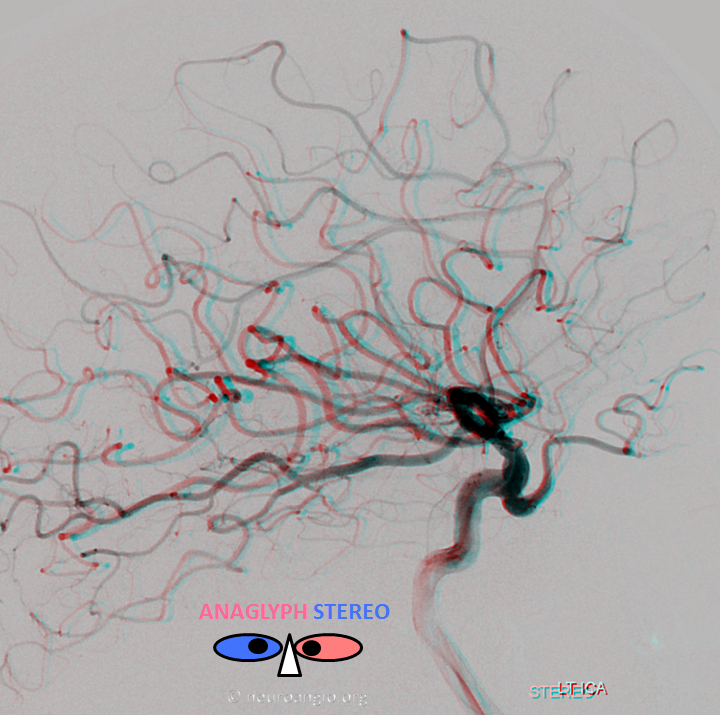

When ophthalmic artery originates from the cavernous segment of the ICA, it is called “dorsal ophthalmic” — a vessel present in early embryonic stages (letter B in figure above). Normally, this vessel “regresses” with development of the definitive “normal” ophthalmic artery. What remains is a typically tiny “anteromedial branch” of the inferolateral trunk (letter I below)

Thus, “dorsal ophthalmic artery” and the “anteromedial branch of the ILT” is the same vessel. The key thing to understand is that even if the anteromedial branch is not visible on angio, it is still present in some microscopic form, and can thus enlarge as needed. More information is found on the “Ophthalmic Artery” page and on the companion “Ventral Ophthalmic Artery” page

A vessel originates from the lateral cavernous portion of the left carotid artery corresponding to location of the ILT and enters the orbit (red arrows). The right ophthalmic artery origin (yellow) is normal. Average (left) and MIP (right) projections of the same case are seen below.

A different patient with dorsal ophthalmic ILT origin
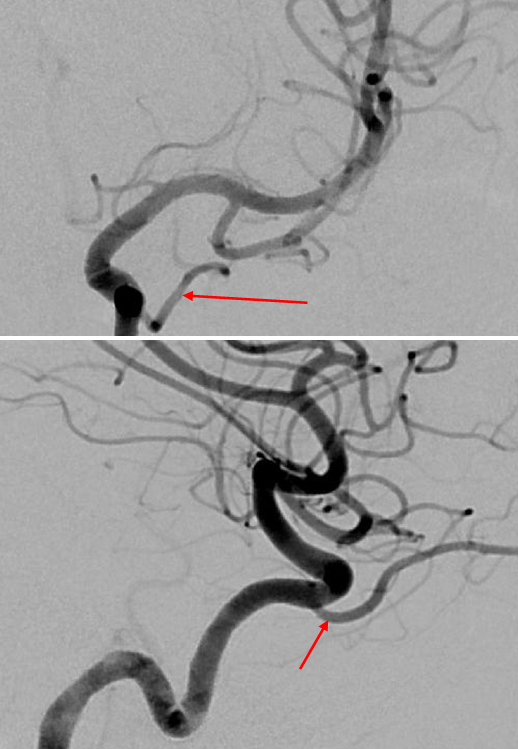



Acquired ophthalmic artery meningohypophyseal trunk origin from the anteromedial branch.In this patient the ophthalmic artery origin was associated with an aneurysm. The upper set of images shows pre-treatment disposition with a prominent anteromedial branch (red) in this case arising from the MHT (rather than ILT, see ILT and MHT pages for info), collateralizing orbital supply (one can think of it as partial persistence of the dorsal ophthalmic artery). Following treatment, the aneurysm is no longer visible, and neither is the “normal” ophthalmic artery. The orbit is now being entirely supplied by the anteromedial branch, resembling an “acquired” dorsal ophthalmic disposition.


Here is a great case of ventral ophthalmic artery on the right and dorsal ophthalmic artery on the left in the same patient. How about that for embryology. Case courtesy Dr. Eytan Raz. White arrows point to ventral ophthalmic. Black to choroid blush
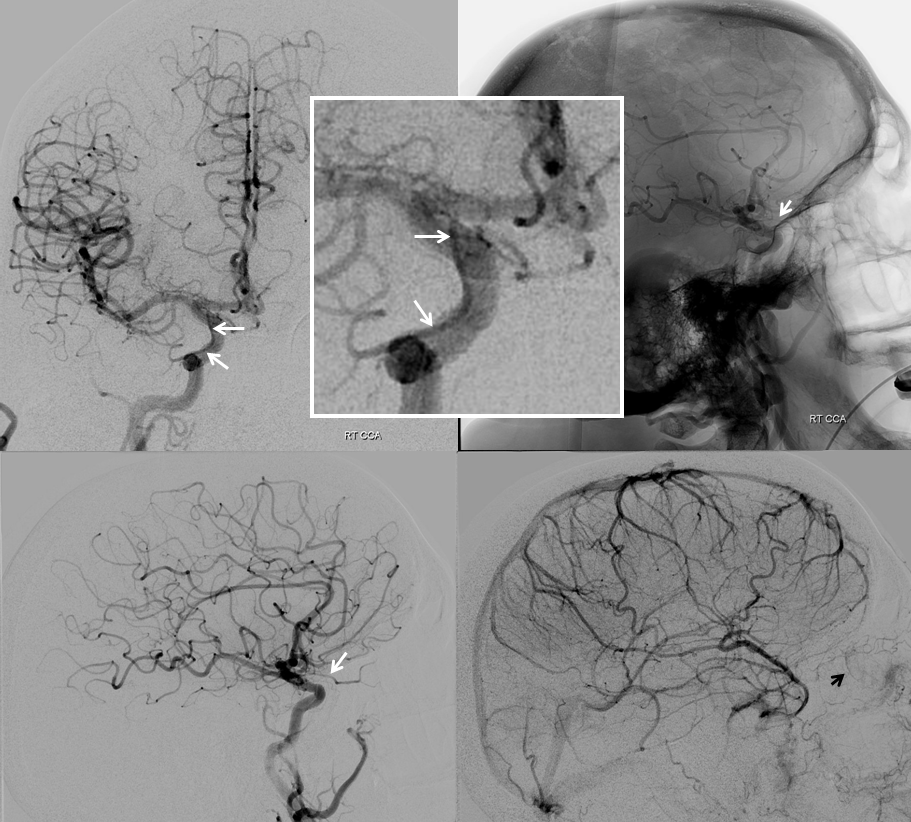
Left side shows a very large dorsal ophthalmic artery — again, embryologically this is the same as the anteromedial branch of the ILT.
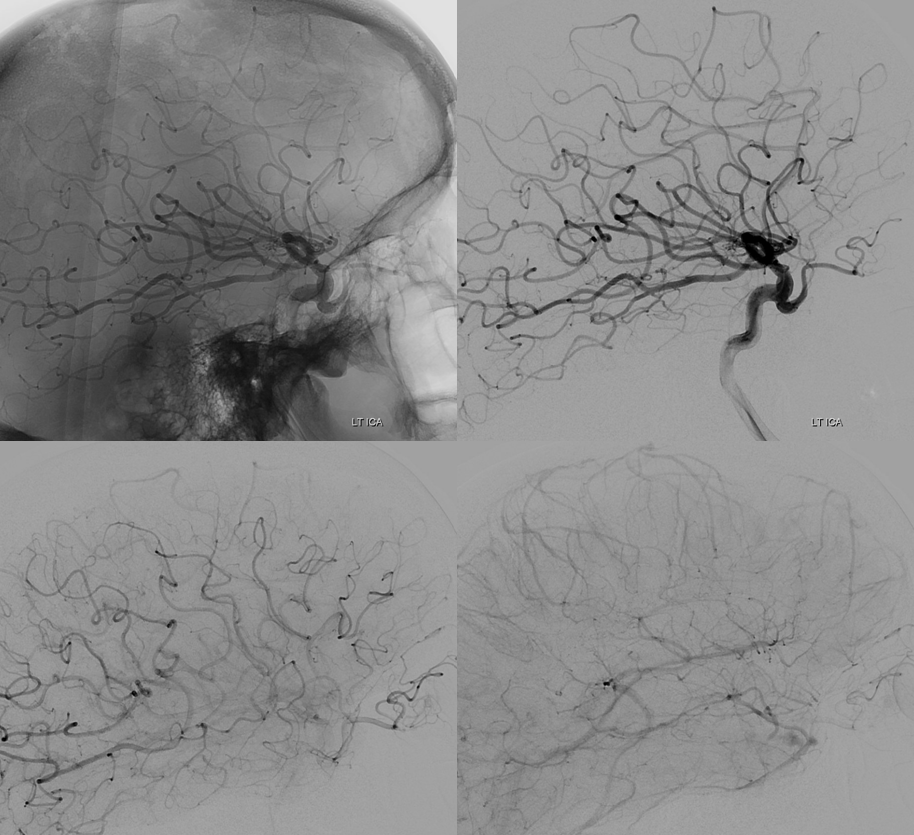
Cross-eye stereos


VRs, showing a another branch of the ILT/dorsal ophthalmic (black arrows)
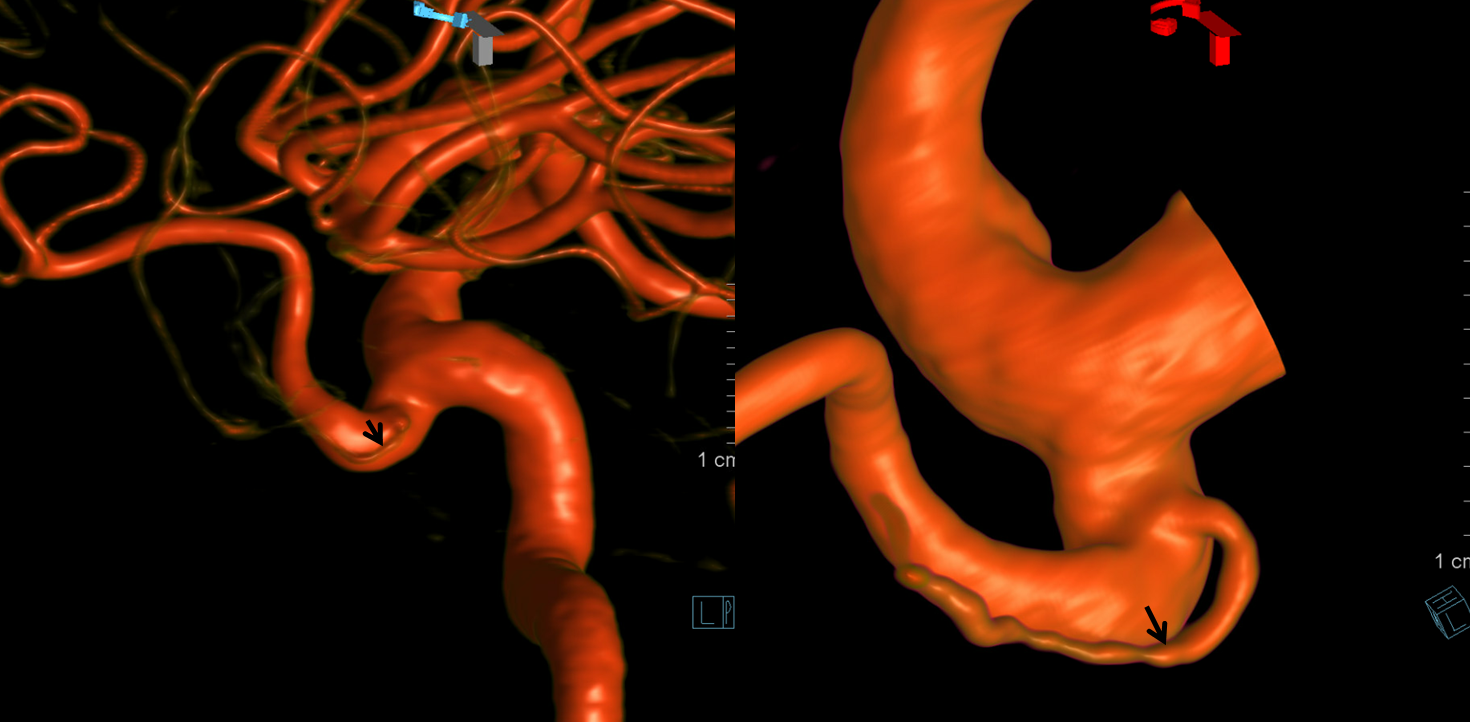
Dyna CT axial views trace the dorsal ophthalmic (white arrows) through the superior orbital fissure. The smaller branch (black) also traverses the superior orbital fissure to enter the orbit more laterally — perhaps a lacrimal branch
Anaglyph VR stereo
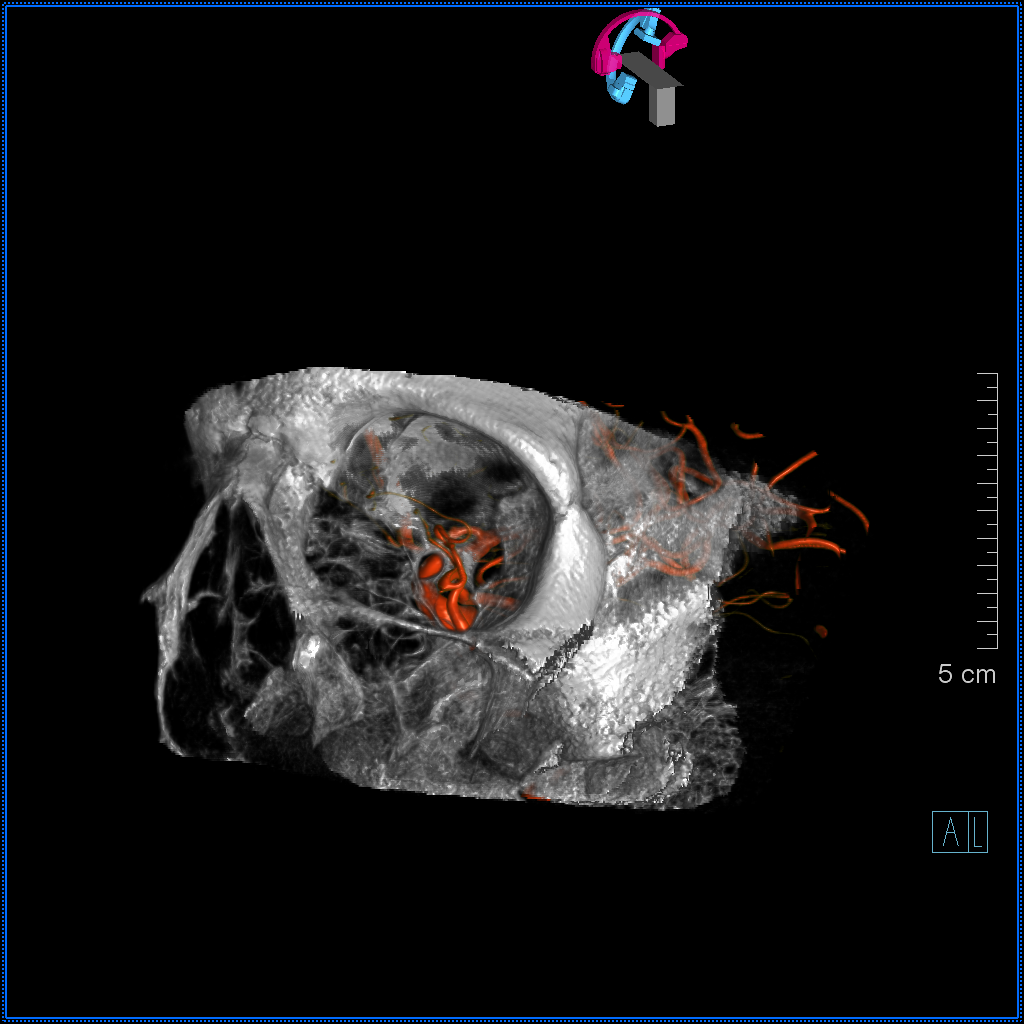
The embryology of ophthalmic artery is a debated topic. In it there is the idea of a ring that forms around the OA at the orbital apex area in early development, connecting various OA forerunners such as dorsal and ventral ophthalmic. Absence of this ring is postulated to result in dual sources of ophthalmic supply, including “regular” and Dorsal ophthalmic coexistence, as shown above. Here is a case of such co-existence on one side, while on the other a curious loop of the proximal ophthalmic is present. Some would postulate both sides to be representative of incomplete ophthalmic ring in early development.
Notice on left the ovale / MMA branch of ILT (white arrowhead) as well, together with the classic anteromedial / dorsal ophthalmic ILT branch (white arrow)

Cross-eye stereo

Anaglyph
Loop cross-eye stereo

Anaglyph
Back to Ophthalmic Artery
